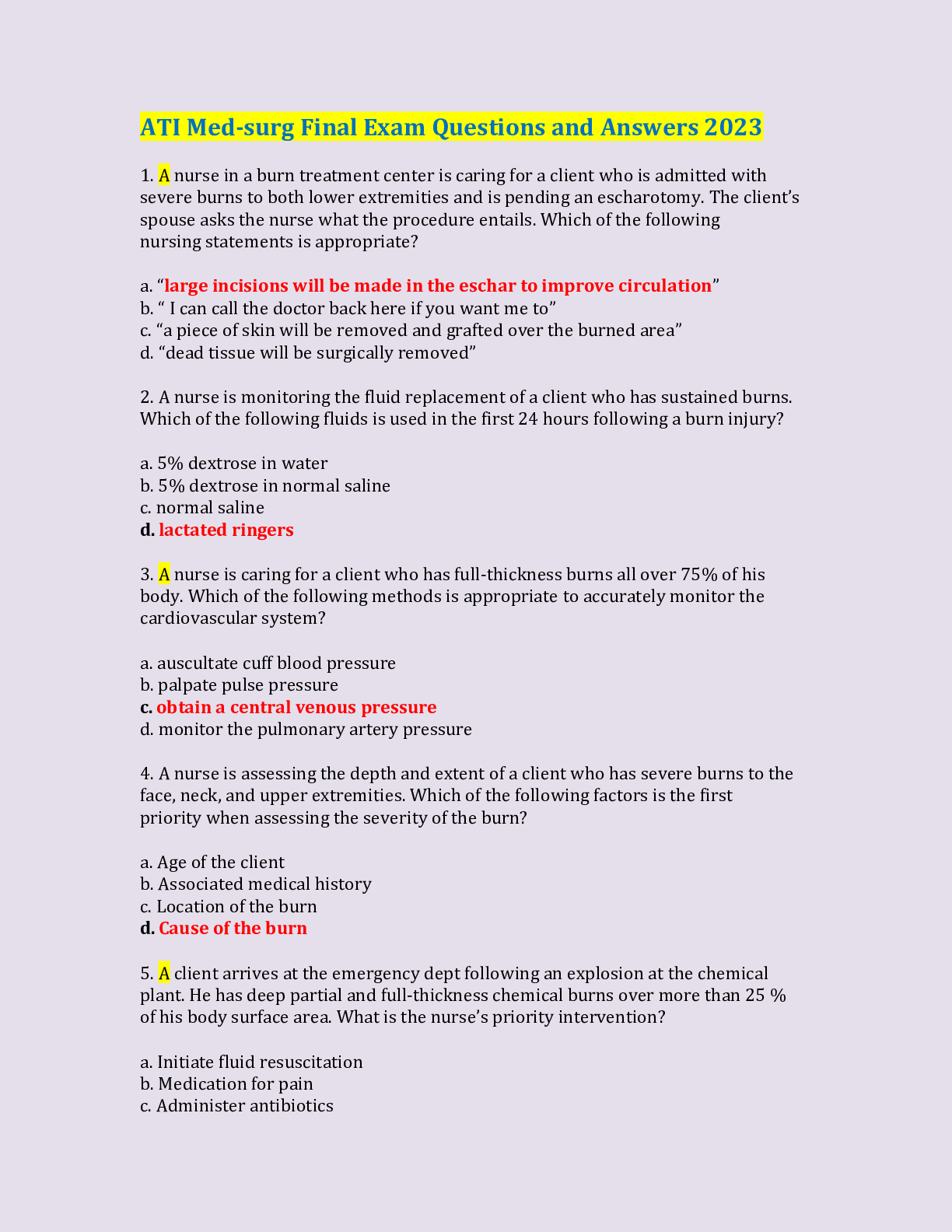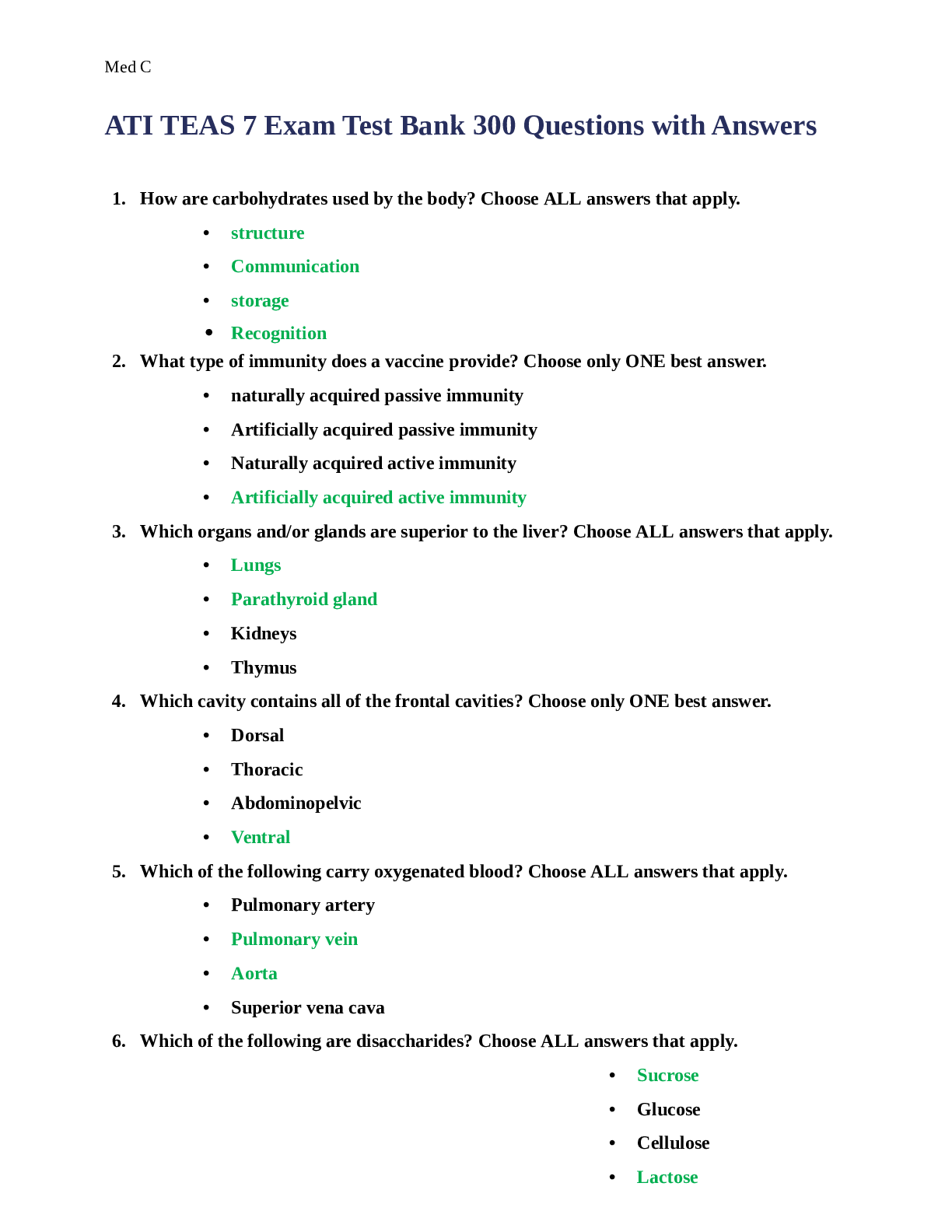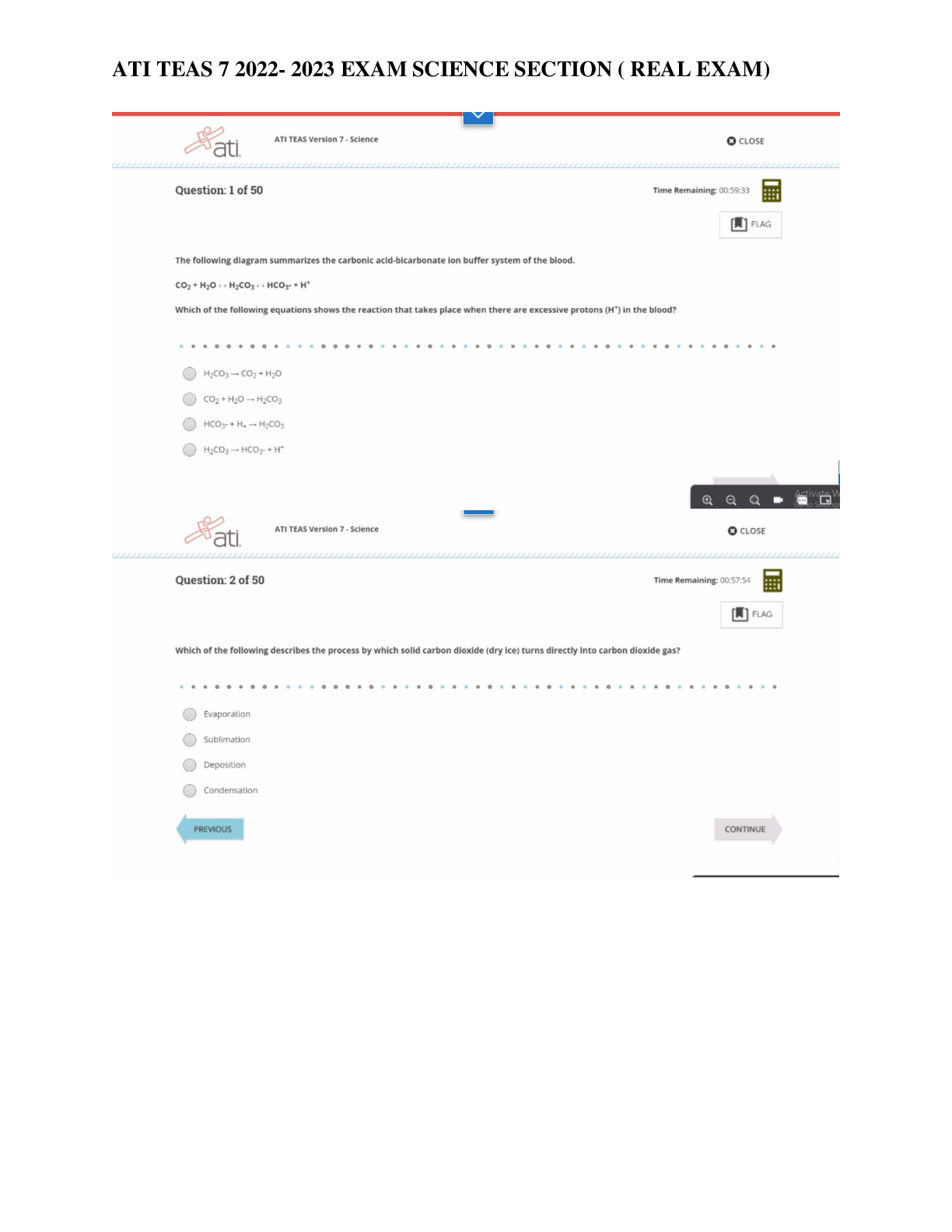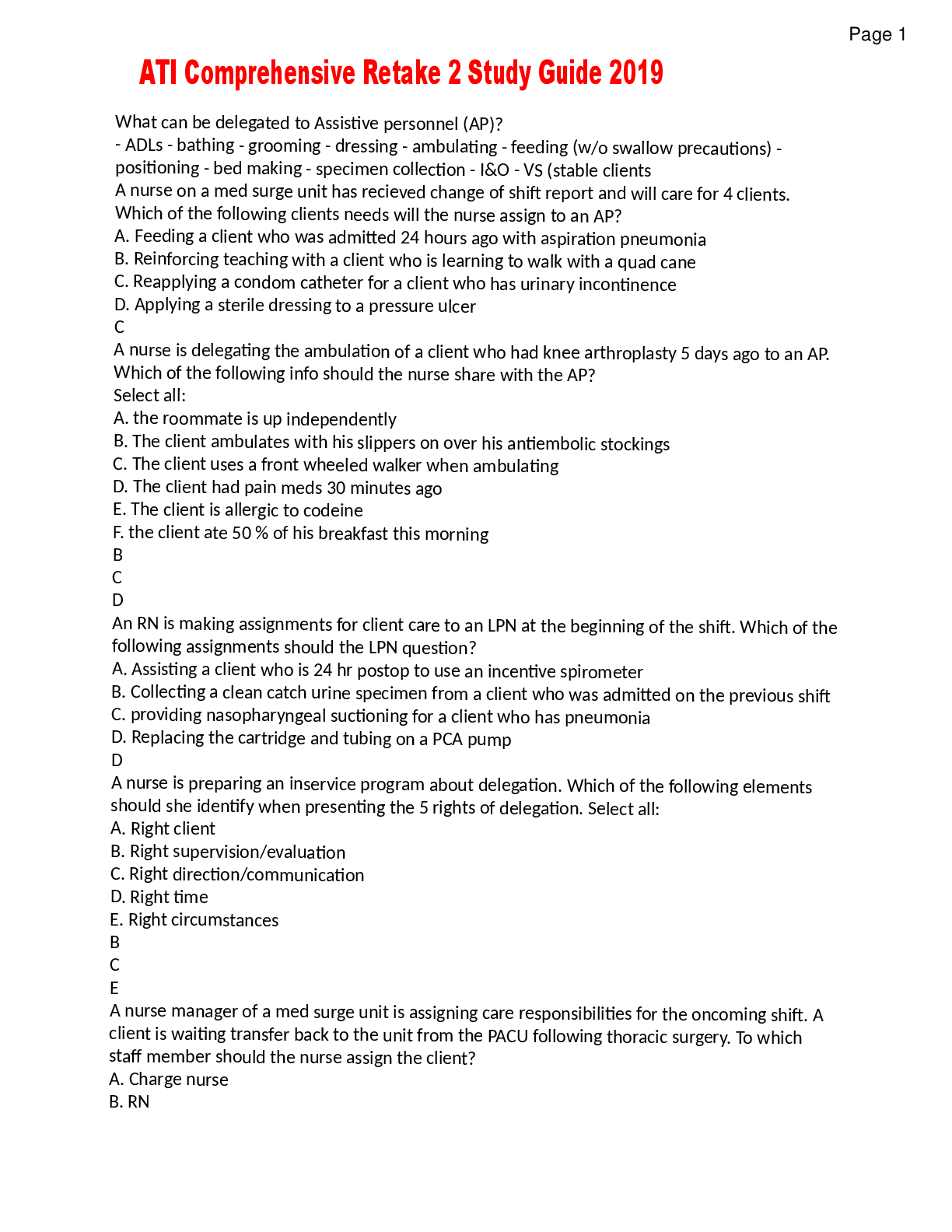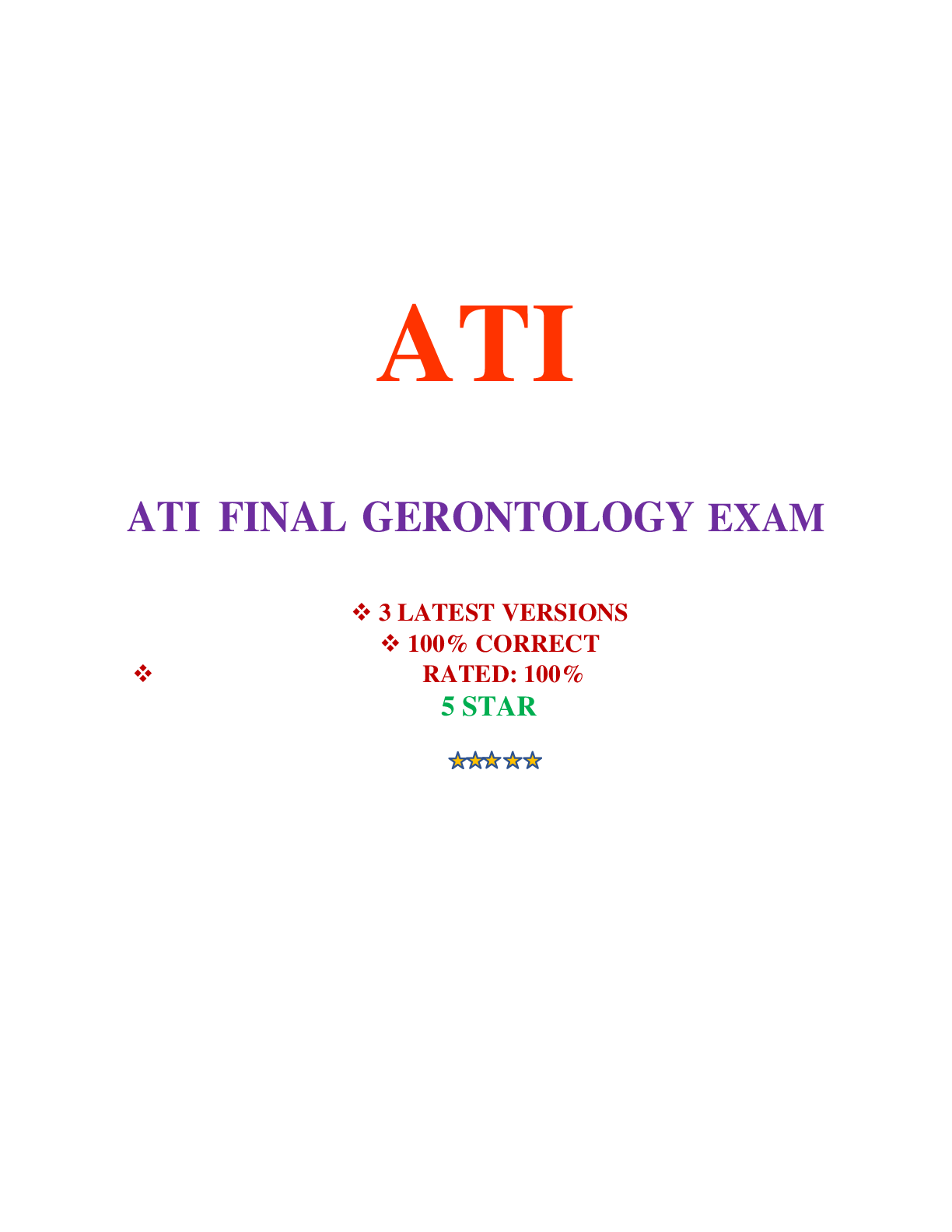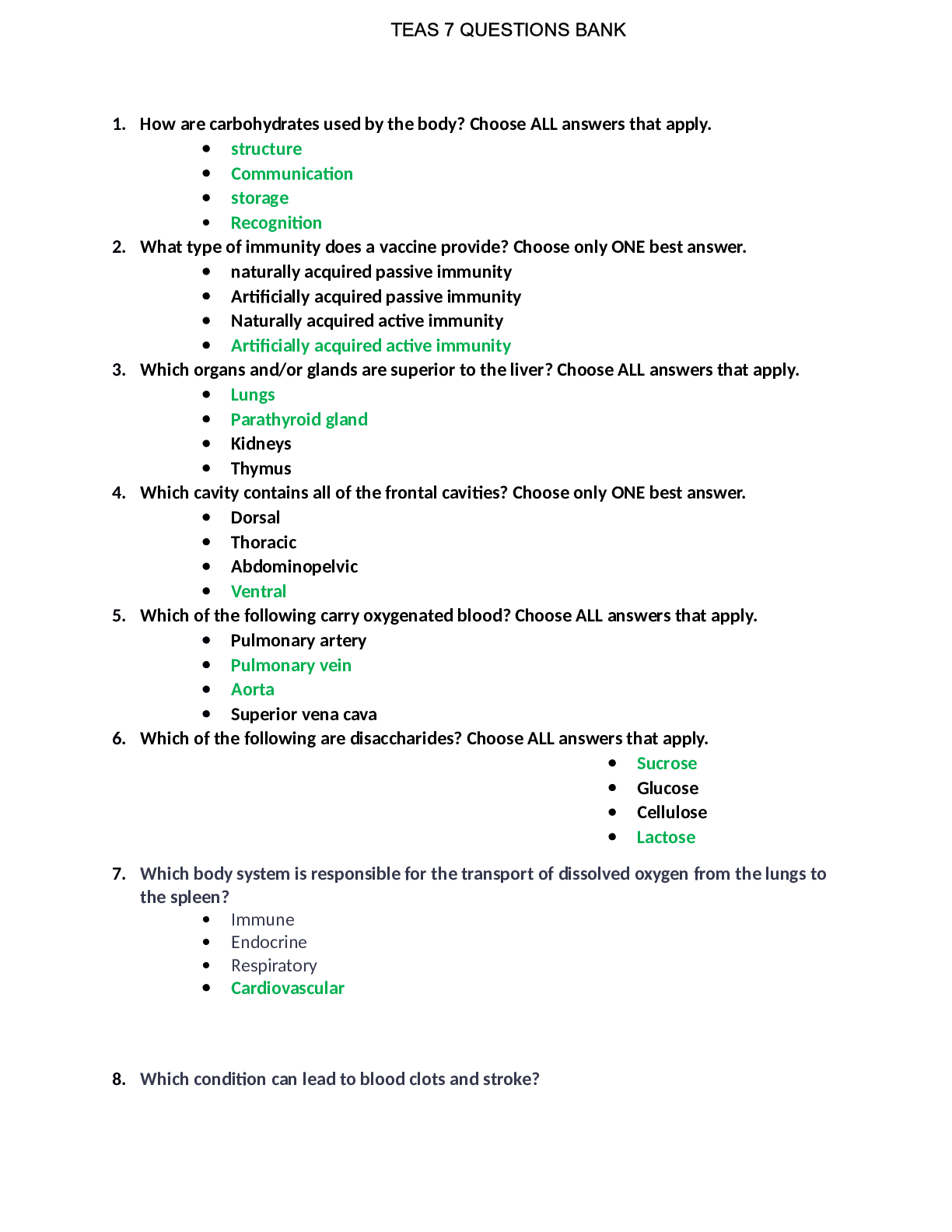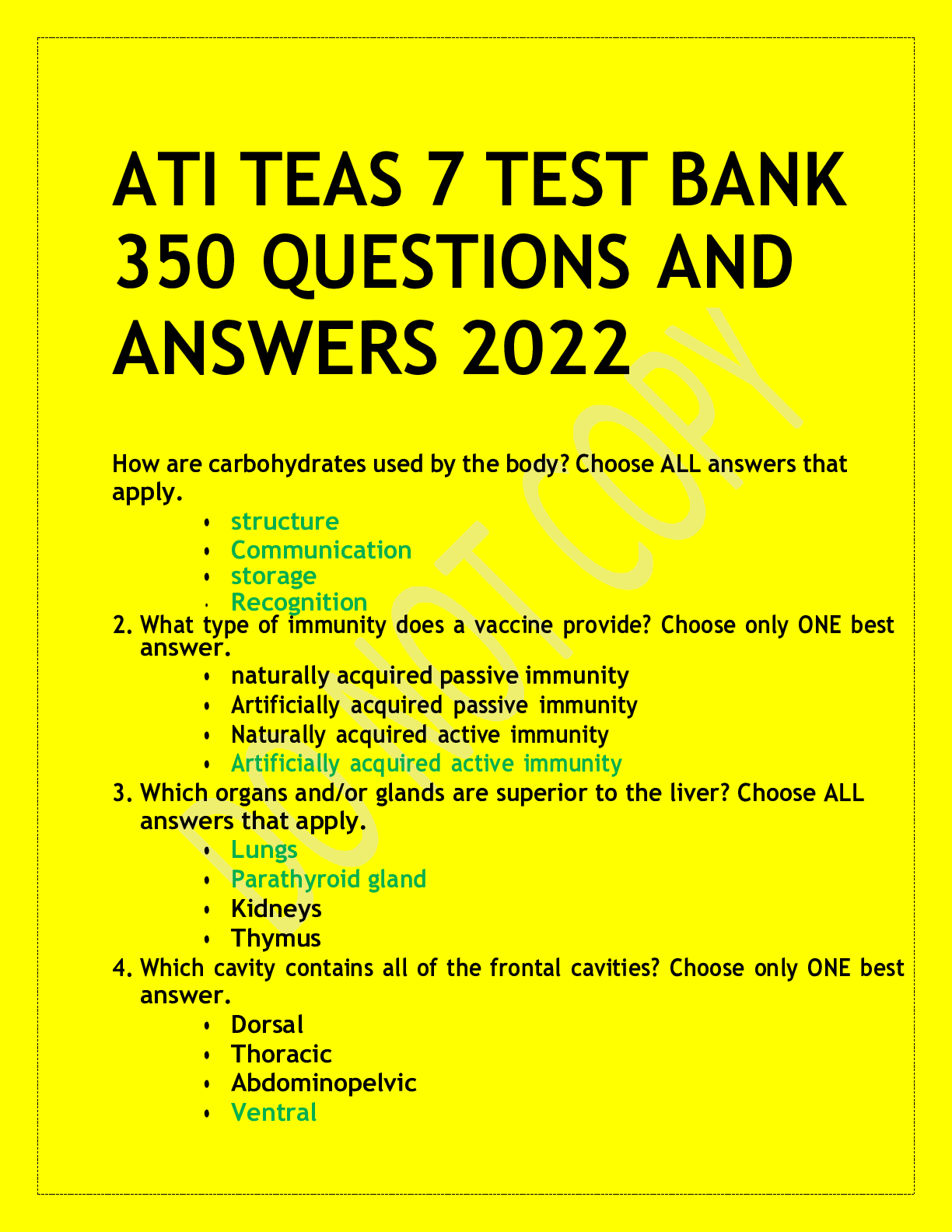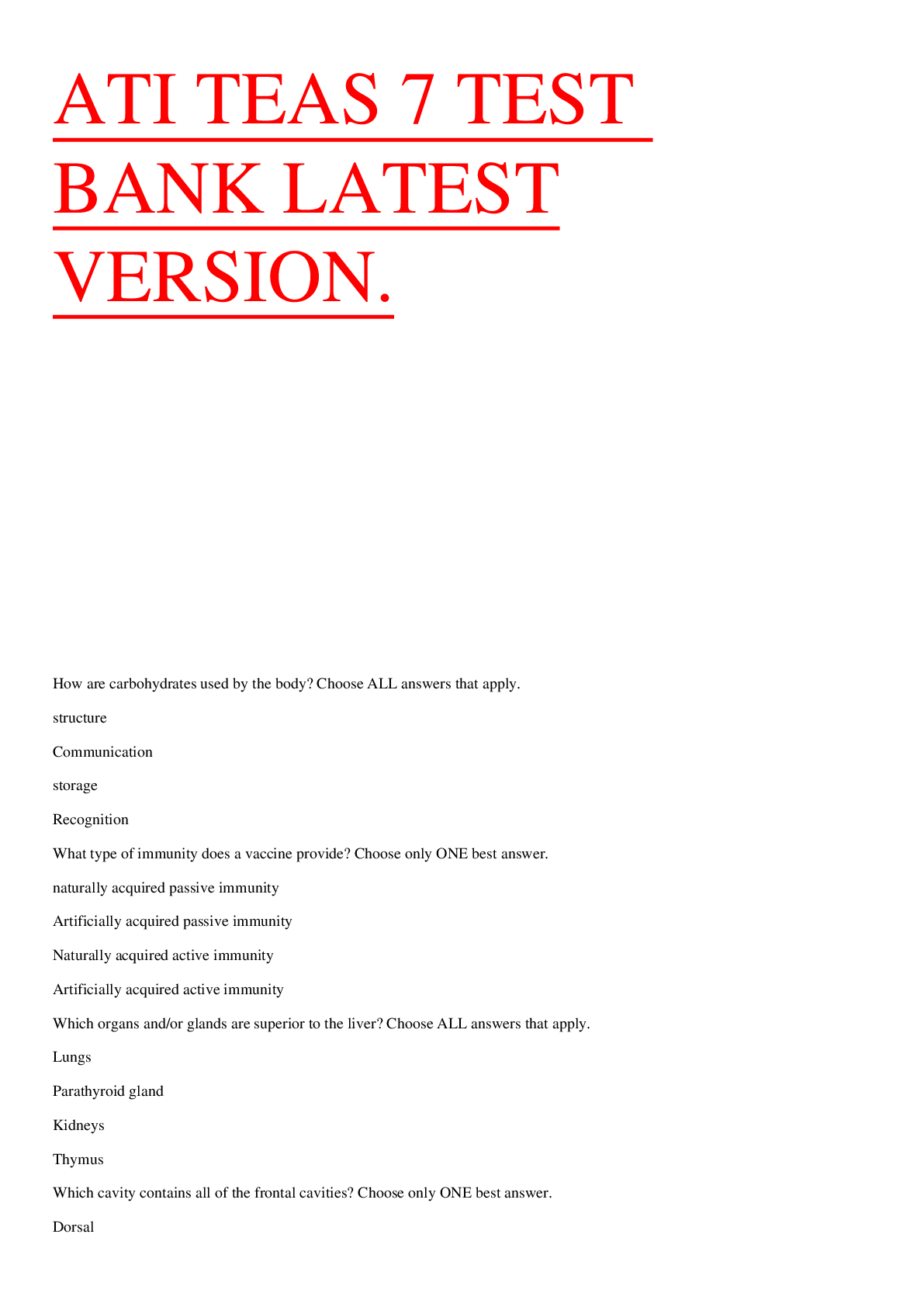*NURSING > ATI > ATI TEAS 7 TEST BANK 350 QUESTIONS AND ANSWERS 2022/2023 GRADED A+ & VERIFIED (All)
ATI TEAS 7 TEST BANK 350 QUESTIONS AND ANSWERS 2022/2023 GRADED A+ & VERIFIED
Document Content and Description Below
1.How are carbohydrates used by the body? Choose ALL answers that apply. • structure • Communication • storage • Recognition 2. What type of immunity does a vaccine provide? Choose only O... NE best answer. • naturally acquired passive immunity • Artificially acquired passive immunity • Naturally acquired active immunity • Artificially acquired active immunity 3. Which organs and/or glands are superior to the liver? Choose ALL answers that apply. • Lungs • Parathyroid gland • Kidneys • Thymus 4. Which cavity contains all of the frontal cavities? Choose only ONE best answer. • Dorsal • Thoracic • Abdominopelvic • Ventral 5. Which of the following carry oxygenated blood? Choose ALL answers that apply. • Pulmonary artery • Pulmonary vein • Aorta • Superior vena cava 6. Which of the following are disaccharides? Choose ALL answers that apply. • Sucrose • Glucose • Cellulose • Lactose 7. Which body system is responsible for the transport of dissolved oxygen from the lungs to the spleen? • Immune • Endocrine • Respiratory • Cardiovascular 8. Which condition can lead to blood clots and stroke? • Aneurysm • Arrhythmia • Asthma • Hypertension 9. A botanist wants to determine if environmental temperature affects root growth. In her experiment, she creates 4 rooms at temperatures that vary by 5 degrees F. Each room gets 20 seedlings of the same species, which she grows on agar plates for 60 days. Once a day, she measures the length of each seedling's root. At the end of 60 days, she compares the length of the roots with the room temperature. She finds the room with the lowest temperature produced the longest roots. What is the independent variable in this study? • Temperature • Seedlings • Light • Root length 10. Which of the following can act as enzymes in the body? • Globular proteins • Lipase • Amylase • Glucagon 11. Which of the following is the carbohydrate monomer? • Disaccharide • Lactose • Monosaccharide • Thymine 12. Which of the following are true about water? • Water has polar covalent bonds. • Water has a neutral pH of 7. • Water has a low specific heat capacity. • Water as a solid is less dense than water as a liquid. 13. Hydrophobic proteins often provide which function in the body? • Digestive enzymes • Provide structure • Carry oxygen molecules • Store energy 14. Which of the following have a smaller genetic scale than a chromosome? • Genome • Gene • DNA • All of the above 15. What best measures the volume of a solid? • Triple beam balance • Measuring wheel and mathematical formula • Graduated cylinder • Measuring wheel 16. What cavities are in the ventral cavity of the human body? • Thoracic Cavity • Abdominal Cavity • Cranial Cavity • Pelvic Cavity 17. Which is the largest part of the airway? • Alveoli • Bronchi • Bronchioles • Trachea 18. Which of the following is an effect of high blood pressure? • Smoking • Excessive dietary salt • Renal vessel damage • Older age19. Wh t mer for nucleic acids? • Nucleotide • Amino acid • Phosphate group • Ribosome 20. Consider the graph which represents a botanist's data of root growth. What is the independent variable? • Temperature • Root tissue • Light exposure • Root length 21. What type of tissue protects the respiratory system's trachea? • Bone • Cartilage • Collagen • Keratin 22. Which of the following are examples of covalent bonds? • H₂O • NaCl • C₆H₁₂O₆ • MgO • 23. Which of the following is an example of Mendelian inheritance? • Incomplete Dominance • Polygenic Alleles • Combination Inheritance • Recessive Inheritance 24. Which of the following are globular proteins? • Antibody • Enzyme • Hemoglobin • Keratin 25. What type of bond connects amino acids? • Covalent • Peptide • Ionic • Hydrogen 26. What is the name for a microorganism that lives on or in the human body and normally causes no disease or harm? • Bacteria • Commensal Microorganism • Microorganism • Host 27. of the following infectious diseases can be caused by a viral infection? • COVID-19 • Varicella • Mumps • Measles 28. You are a nursing student and are triaging a patient. Which of the following is an example of quantitative data you can gather? • The patients say he feels pain. • The patient says he has stabbing pain in his right lower abdomen. • The patient's temperature is 101.7 degrees F. • The patient reports that he had a fever yesterday 29. Which of the following are examples of steroids in the human body? • Cholesterol • Testosterone • Cortisol • Estradiol 30. What of the following factors influence the rate of a chemical reaction? • Temperature • Pressure • Concentration of reactants and substrate • Any catalysts 31. Which of the following infectious diseases can be caused by bacteria? • Tuberculosis • Cholera • Varicella • Influenza [Show More]
Last updated: 2 years ago
Preview 1 out of 88 pages

Buy this document to get the full access instantly
Instant Download Access after purchase
Buy NowInstant download
We Accept:

Reviews( 0 )
$32.00
Can't find what you want? Try our AI powered Search
Document information
Connected school, study & course
About the document
Uploaded On
Jan 06, 2023
Number of pages
88
Written in
Additional information
This document has been written for:
Uploaded
Jan 06, 2023
Downloads
0
Views
90





